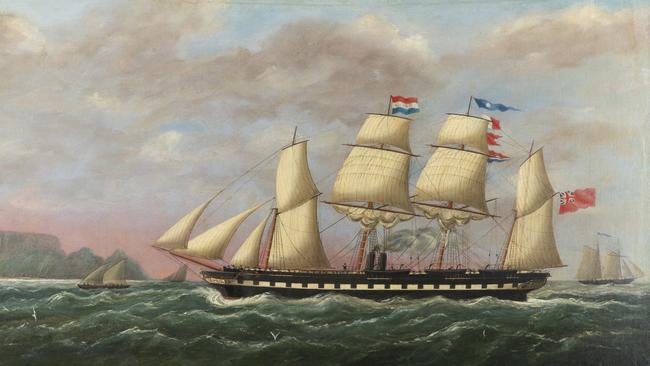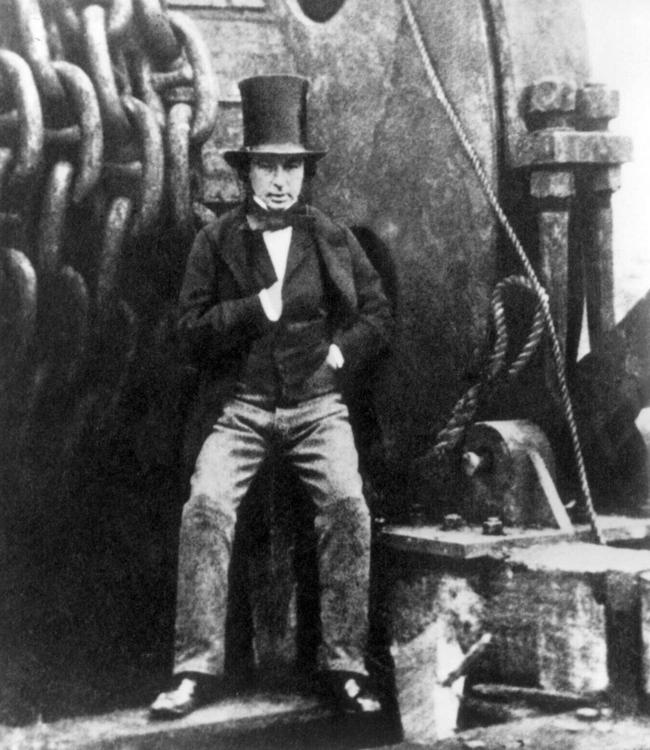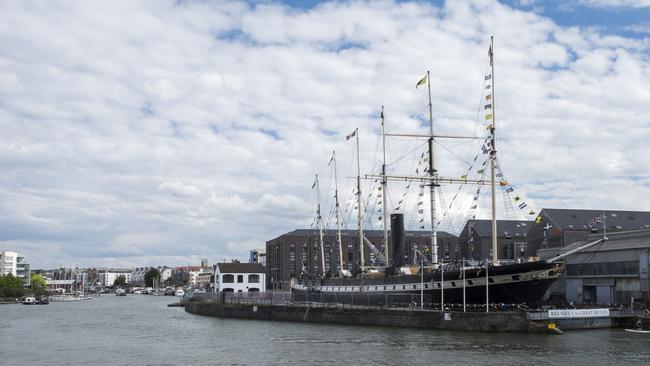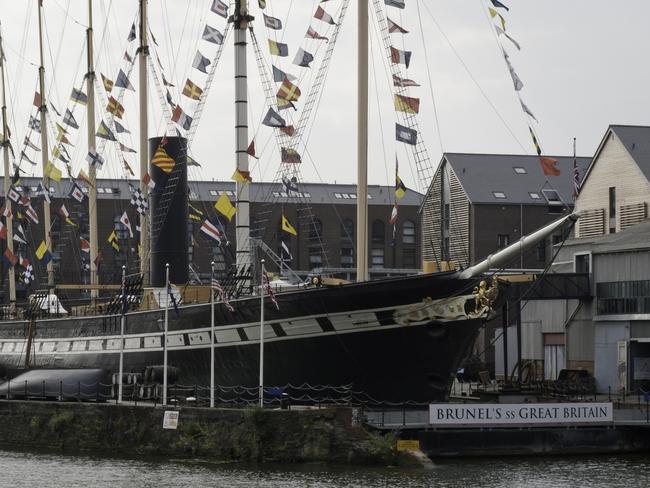Isambard Kingdom Brunel’s great SS Great Britain brought 15,000 to Australia
WHEN SS Great Britain made its first voyage to Australia in 1852 it promised to shorten the voyage by months.

Today in History
Don't miss out on the headlines from Today in History. Followed categories will be added to My News.
THEREwas great fanfare at the departure of SS Great Britain on her first voyage to Australia in 1852.
When the steamship was first launched in 1843, 175 years ago today, it was the world’s largest ship and the first to combine a steel hull with a screw propeller. It was later converted back to using a combination of sail and steam, but was still a marvel of modern marine engineering.
For her maiden Australia voyage, 630 eager migrants piled aboard, many of them headed for the goldfields of Victoria. A trip that normally took four months by sailing ship, the Great Britain promised to do it in just 60 days.
But, due to poor planning, that first trip didn’t live up to the promise.
After passing St Helena island, in the South Atlantic Ocean, the captain discovered someone had underestimated the amount of coal needed for the trip and had to turn back for more, which extended the trip to 83 days.

The Great Britain would go on to complete 32 voyages and bring more than 15,000 people to Australia. One estimate puts the number of descendants of migrants who travelled on her, living today in Australia and New Zealand, at around 500,000. (In a boon for those interested in family history, records of those who made the trip can be found at globalstories.ssgreatbritain.org)
SS Great Britain was the creation of engineer Isambard Kingdom Brunel, born in Portsmouth in 1806, the son of Marc Isambard Brunel, a French engineer who fled the French Revolution to settle in England and most famous for building a tunnel under the Thames.
Brunel’s achievements would by far eclipse those of his father. After starting school in Britain in 1820, Brunel was sent by his father to Paris to study at the Lycee Henry IV, but being a foreigner he missed out on an opportunity to study at the Ecole Polytechnique. Instead he was apprenticed to master French clockmaker Abraham-Louis Breguet, founder of the luxury watchmaking company Breguet.
When Brunel returned to England in 1822 he assisted his father on various projects, including the Thames Tunnel in 1825, taking over from his father as resident engineer in 1827.
He went on to design railway lines, bridges and the Bristol Docks. His involvement in land-based transport networks naturally led him toward plans to extend those networks via ships across the Atlantic.
In 1836 he accepted an offer to design the world’s most advanced steamship for the Great Western Steamship Company, which had grand plans for a regular steamship service to America. Many thought it impossible for steamships to make such long voyages. But that dream became reality in 1838 when SS Great Western, then the world’s longest ship at 65m, made its maiden voyage from Bristol, cutting the time across the Atlantic in half to just 15 days. However, on its way to Bristol, Brunel was injured during a fire aboard the ship, prompting many passengers to cancel their tickets. Consequently, only seven passengers made the maiden voyage.
His next project was SS Great Britain which was to be even bigger, 98m long and 3400-ton displacement. Instead of paddle wheels the ship used a screw propeller. It made its maiden voyage from Bristol on July 19, 1843, five years later than the shipping company had expected. It ran into some problems on its first voyages, including failing to considerably speed up passage across the Atlantic.


In 1846 the ship ran aground at Dundrum Bay, Ireland, and was not refloated until 1847 after which the Great Western company sold her to Antony Gibb & Sons who gave the ship a complete refit and, in 1852, put her into service taking migrants to Australia.
Although the Australian run was only meant to be for a short time, the voyages lasted for more than 20 years.
Among the most famous passengers were the first English cricket team to tour Australia in 1861, including Edward Mills Grace, elder brother of W.G. Grace, who kept a diary of his time aboard. Author Anthony Trollope also travelled on the Great Britain in 1871 to visit his son Frederic and spent the voyage writing a book about Australia and New Zealand.
Great Britain made its last voyage to Australia in 1876 after which it was converted into a cargo ship to carry bulk coal. A fire aboard the ship in 1886 led to it being sold off to the Falkland Islands Company to be used as a storage hulk in Port Stanley.
When it outlived its usefulness in 1937 it was scuttled, but some of the iron was later used to repair a royal navy ship after the battle of River Plate in 1939.
Refloated in 1970, she was taken back to Bristol and restored, and is now a tourist attraction.

